. . . and from heaven a great star shall fall on the dread ocean and burn up the deep sea, with Babylon itself and the land of Italy, by reason of which many of the Hebrews perished,Are these lines from Book V of the Sibylline Oracles eschatological nonsense? Contemporary astronomical evidence suggests a historic basis for words describing cosmic calamity. British astronomers, Victor Clube and Bill Napier, in The Cosmic Winter (1990) and other recent works, provide students of the past with newly discovered celestial clues which indicate that Earth has been periodically pelleted with comet fragments throughout the Holocene period. The evidence for the break-up of a large (> 50 km), short period (approximately 3.3 years), Earth-orbit-crossing comet is substantial and should be considered as hard as anything a trowel might turn up. What astronomical information cannot convey is the actual effect these periodic bombardment episodes had on human culture; only further digging and sifting will illuminate that aspect.
. . . Be afraid, ye Indians and high-hearted Ethiopians: for when the fiery wheel of the ecliptic(?) . . . and Capricorn . . . and Taurus among the Twins encircles the mid-heaven, when the Virgin ascending and the Sun fastening the girdle round his forehead dominates the whole firmament; there shall be a great conflagration from the sky, falling on the earth;
Some of what can be uncovered has been buried by prior premise and so can be brought to light by review of literature published over the years. For instance, the oracles quoted above are from a 1918 translation of the Sibylline by H.N. Bate. Further into Book V these lines appear:
And then in his anger the immortal God who dwells on high shall hurl from the sky a fiery bolt on the head of the unholy: and summer shall change to winter that day.Bate notes that Book VIII contains a parallel passage with winter being changed to summer--fortunately he did not feel compelled to "correct" the lines above as others have. For example:
And then the imperishable God who dwells in the sky in anger will cast a lightning bolt from heaven against the power of the impious. Instead of winter there shall be summer that day.This comes from Old Testament Pseudepigraphia (vol. 1) published in 1983. Not only has the passage been rationalized (If God throws down fire it should get hotter, right?), but, a fiery bolt now has become a lightning bolt.
Evidence of impact induced cold is valuable in gauging how energetic a past fall was. Based on nuclear winter studies, a cosmic collision would need to impart at least the energy equivalent of a thousand megatons TNT into the environment to produce such an effect.
A number of cultures retained stories of impact induced winter. Most telling of such lore this author has read are these amazingly informative tales of the Yakuts: [note that the CH in brackets below is printed in the reference as a "c" with a diacritic "v"]
[CH]OLBON . . . is said to be "the daughter of the Devil and to have had a tail in the early days". If it approaches the earth, it means destruction, storm and frost, even in the summer; . . .Both folk memories were recorded by ethnographer V.L. Serosevsky, the first in 1877, the next in 1885. The Yakuts identified Venus as colbon; however, as a later student of this culture, G.V. Ksenofontov, observed:
[CH]OLBON, the daughter of the Devil is a beautiful girl ... she is the bride and the sweetheart of Satan's son ÜRGEL (Pleiades). When these two stars come close to one another, it is a bad omen; their eager quivering, their discontinuous panting cause great disasters: storms, blizzards, gales. When they unite, fathom deep snow will fall even in the summer, and all living beings, men, animals and trees will perish . . .
The Yakuts have two words for the "star": SULUS and [CH]OLBON. The first means simply "star", the second refers to stars that change their place in the sky, sometimes appearing and disappearing. Nowadays, however, it no longer--or very seldom--refers to other planets than Venus and has almost become its name. Yet, as we have seen, in legends also other [CH]OLBONS (i.e. planets) are mentioned.What is remarkable about these particular tales is the conjunction of several pieces of information. From these lines we gather that a comet ([CH]OLBON with a tail) came close enough to influence weather on Earth--i.e. deadly storms, frost and deep snow in summer. Also, we are told that this is most likely to occur if the comet appears close to the Pleiades. In short, these legends accurately describe what can now be inferred from astronomical data on comet Encke and the ring of debris its progenitor strew about the Sun.
As the above example suggests, contemporary researchers need to be wary of assuming our predecessors' folk memories of astral events relate to bodies familiar to our time. There is considerable reason to suspect that the majority of the planets namesakes were comets--probably of the Encke family.
A conventional view comes from W.M. O'Neil's Time and the Calendars (1975):
The word planet comes from the Greek PLANETES, the wanderers; these seven celestial bodies moved among the fixed stars. The Babylonians had a more picturesque name, BIBBU, the wild sheep, as these bodies broke through the fixed formation in which the tame sheep crossed the sky.To call into question Greek continuity of planet identity I refer to Leonardo Taran's work on the "Pseudo-Platonic" Epinomis (1975) where in commentary on lines 986 A 8-987 D 2, Taran states:
Having previously proved to his own satisfaction that all the heavenly bodies are the greatest divine living beings and having pointed out that they are not yet honored as gods, the author explains who these visible gods are and why they are not honored in Greece. They are the eight interrelated sidereal revolutions and the heavenly bodies which travel on them, for they are all gods of the same kind. And the contemplation of this divine cosmic order is what will make a man happy both in this life and in the next. But the lack of this wisdom in Greece is due to ignorance of the true paths of the planets, a knowledge which comes from the Orient and which must be incorporated into our laws. That the knowledge of the planets comes from the Orient is to be seen in the very fact that the planets lack proper names and are called after the (traditional) gods, for this kind of appellation is due to the barbarians who first discovered the planets.The Epinomis, which dates from around the 4th century BCE, is the earliest extant record of Greek planet names; each is given as "the star of": Cronos, Zeus, Aphrodite, etc. Clearly the planets did not inspire the earlier stories which championed these gods. The mythology associated with these names certainly better describes the break-up of a comet with an orbit that crossed Earth's path than the monotonous behavior of planets.
As for the BIBBUS, as well as the Oriental influence alluded to above I call attention to J.K. Bjorkman's article in Meteoritics (1973) which deals with much earlier texts:
We move now to a discussion of a word which probably refers to comets, BIBBU. . . BIBBU has a variety of astromantic and non-astromantic meanings. There is a lengthy omen text, the 56th tablet of Enuma Anu Enlil, which deals with various features of the BIBBU, and some of these seem to describe comets. For example:Confusion of planet terminology is also evident further to the east as can be demonstrated by James Legge's translation of a passage concerning the emperor Kwei in the Annals of the Bamboo Books:
If a BIBBU continues one day, two days in the sky and does not disappear:
If three or four BIBBUS rise one after the other at sunrise
The latter text might refer to a comet which has broken up into three or four comets . . . .
There are many more references to BIBBU, but in them the translations "unspecified planet" or "meteor" could be proposed.
In his 10th year, the five planets went out of their courses. In the night, stars fell like rain. The earth shook. The E and Loh became dry.With astronomical evidence in mind a simplified, but testable, hypothesis of Bronze Age collapse would involve accepting the legend of Phaethon as an event inspired myth, as Plato contended it was, and also giving credence to stories of protracted winter in the aftermath of celestial "battles," such as the Ragnarok.
During a close approach to a massive object like our planet a comet would be gravitationally disrupted (Phaethon's disentegrating chariot) independent fragments would then further break to pieces as they entered Earth's atmosphere.
Comment: We now know for certain that this happens because of the observed break-up of Comet Schumaker-Levy, and its subsequent impact on Jupiter in multiple fragments, in 1994.
This debris, of various shapes and sizes, would scatter widely along the path of the fall, each piece harboring energy in proportion to its mass. The "footprint" of this event could have included some of: southern Europe, the Mediterranean, the Near East, and Northern Africa. Damage, however, would not be uniform throughout this area. If the disintegrating objects were traveling south of east, as the Phaethon story implies, the more massive fragments would travel farther and release their greater energy, explosively, lower in the atmosphere toward the southeast end of the elliptical area directly affected by the fall. In other words, the Near East would be more heavily damaged than southern Europe. A survey scaling intensity of site destruction might reflect this aspect, i.e., vitrification of soil and building materials might occur below lower altitude multi-megaton blasts.
Secondary effects of a large impact event would include: a spottily enhanced C-14 environment, making this means of dating unreliable to confirm or refute simultaneous destruction of disparate sites; a large production of oxides of nitrogen yielding dangerous ozone depletion, perhaps giving a survival advantage to darker skinned people in the aftermath, particularly in equatorial regions; acidic precipitation from the above-mentioned atmospheric chemistry; and, in the higher latitudes, impact winter, caused by suspended dust and soot.
All of these phenomena would leave evidence which careful field work could reveal. Some indicators may already be evident, such as the abandonment of many long settled sites, a large southward movement of people from the higher latitudes, and a steep, long-term (1159-1140 B.C.) decline in the annual growth of Irish bog oak that stands out in the 7,272 year long dendrochronological record, based on this species of tree. [Baillie and Munro (1988)]
Definitive evidence of impact, however, can only come from a detailed analysis of debris directly overlying destruction sites.
I urge archaeologists working on this time period to diligently collect dust and debris from cracks and crevices where violent destruction is apparent. In 1992 the current Greenland ice coring project should be complete. If a large impact occurred around 3200 years ago a significant nitric acid spike will be evident in these ice core samples. Several cores are being drilled simultaneously, so the chance of finding debris in association with the nitric acid signal should be good. An element profile on this material could then be compared with results on debris extracted from terminal Bronze Age sites. If these match, not only will there be confirmation of a violent natural catastrophe, we will also have gained a rather precise gauge of when the disaster took place.
Astronomical evidence indicates our ancestors viewed a much more active sky than we. A seemingly nonsensical notion, such as Athena being born fully formed from the head of Zeus, becomes understandable as a description of comet fragmentation. Human belief systems have been greatly influenced by the phenomena attending the progressive break-up, over thousands of years, of this large comet. The idea of a wrathful sky god or star positions influencing events on Earth are legacies of this influence.
Many astronomers believe the 1908 Tunguska impact was from a small piece of Comet Encke. This 15 to 30 megaton event leveled 2000 sq km of dense Siberian forest, but left no crater. Certainly there have been many damaging falls witnessed by people during the 15,000, or more, year period of the comet's fragmentation history. The terminal Bronze Age event was probably just one of several very energetic impacts which likely occurred in this time span.
Our less than seven hour separation from a collision with a near-Earth asteroid (1989FC) in March of 1989 underscores the fact that contemporary civilization could be thrown into a dark age by natural catastrophe. Had 1989FC encountered Earth it would have introduced the energy equivalent of more than 2,000 megatons TNT into the environment, with little or no warning. The object was discovered on photographs days after the close pass. In 1937 an even larger object, Hermes, came almost equally near Earth. Neither of these asteroids is likely to be related to the break-up of the recent large comet referred to above. The estimated population of Earth-orbit-crossing objects greater than half a kilometer in diameter is over 2,000 and its members are from various sources. Obviously our planet gets hit fairly often. What the recent large comet did was increase the likelihood of collision and establish a visible cause/effect relationship in the minds of our ancestors.
The association of disaster (etymologically, dis - evil; aster - star) with comets eventually became generalized beyond direct causal links, giving science oriented investigators reason to classify this ubiquitous notion as mere superstition. Scientific efforts to understand the past were thus rendered purblind to a highly influential natural phenomenon.
It is technically feasible to prevent future impacts by altering the orbits of threatening objects. Unfortunately, there is little widespread support for such an Earth Defence Initiative (EDI) due, in part, to the general belief that humanity has not, in the past, been harmed by impact events.
Archaeologists can play a key role in justifying an EDI by digging in to set the record straight.
Though gaining a detailed understanding of the effects such episodic impacts had on humanity will take some time, incorporating recent astronomical evidence can provide immediate boons to our comprehension of past cultures.
The fortunate find in the seventies, at Mawangdui, China, of a Han dynasty silk comet atlas sheds considerable light on earlier enigmatic motifs. Most illuminating is the drawing, described by text on the artifact as a long-tailed pheasant star. This rendering of a jetting comet viewed down its axis of rotation has a considerable history, and, as a motif, appears on artifacts found in most areas of the world. The artist who illustrated this silk twenty-two hundred, or so, years ago was not likely a first-hand observer. What is produced here is a schematic of received comet caricatures with claims that specific things will happen if a represented type appears. The pinwheel-like image is unique to the compilation in that an omen is given for an appearance in each of the four seasons, implying that this comet was seen more often than the others represented. This may illustrate a frequently viewed aspect of comet Encke which has a 3.3 year orbit and rotational axis that occasionally points toward Earth. [Whipple, F. 1985]
Important in understanding ancient oriental lore is learning that this motif was associated with the pheasant (divine bird in China) which is frequently mentioned in the Chinese classics. The link between the spinning cross and birds is evident on artifacts from many cultures. Perhaps the association of the Sanskrit term "svastika" with this symbol can be linked to the Astika Parva in the Mahabharata which relates the birth of a cosmic bird par excellence--Garuda. This fabulous winged deity had a radiance like the Sun, could change shapes at will, and destroyed other gods and kings by casting down fire and stirring up storms of reddish dust which darkened the Sun, Moon and stars. Clearly Garuda was symbolic of an Earth approaching comet.
The bird-comet connection is even more obvious in the Jamva-khanda Nirmana Parva of the Mahabharata which describes a fierce fowl with but one wing, one eye, and one leg, hovering in the night sky. As this bird "screams" and "vomits blood":
All the quarters of the earth, being overwhelmed by showers of dust, look inauspicious. Fierce clouds, portentous of danger, drop bloody showers during the night. Rahu of fierce deeds is also, O monarch, afflicting the constellation Kirtika. Rough winds, portending fierce danger, are constantly blowing.The mention of Rahu, the demon of eclipse, which originally had four arms and a tail that was severed by Vishnu to become Ketu (comet) is interesting in that the demon is here darkening Kirttika (the Pleiades) in the month of Karttika (latter half of October, through mid November), for the tale goes on to relate that:
. . . in course of the same month both the Moon and the Sun have undergone eclipses on the thirteenth days from the day of the first lunation. The Sun and the Moon therefore, by undergoing eclipses on unusual days, will cause a great slaughter of the creatures of the earth. Meteors, effulgent like Indra's thunder-bolt, fall with loud hisses . . . People, for meeting together, coming out of their houses with lighted brands, have still to encounter a thick gloom all round . . . From the mountains of Kailasa and Mandara and Himavat thousands of explosions are heard and thousands of summits are tumbling down . . . Fierce winds charged with pointed pebbles are blowing, crushing mighty trees. In villages and towns trees, ordinary and sacred, are falling down, crushed by mighty winds and struck by lightning.This is, without doubt, a mythological record of an intense meteor storm from the still active Taurid stream which presently peaks around the first of November and appears to radiate from near the Pleiades star cluster. The un-airworthy bird associated with this meteor bombardment could have been comet Encke which until recently was thought to be the sole source for the Taurid meteors. However, the discovery of other large contributors which are now dark but were once active comets rules out a positive identification.
In a less artificial environ animal tracks speak strongly to people and convey much about the creature which left them. Thus a bear, bird or any animal which made impressions on the ground could be symbolically represented in total by drawing these marks. I suggest that the jetting comet, to some cultures, looked like a bird's foot and, as a motif, represented a divine fowl. This can explain why the not very bird-like drawing on the Han silk is captioned as a pheasant star. Chinese lore upholds such an interpretation as Ts'ang Chieh, the four eyed legendary inventor of writing, derived his inspiration to create written symbols from noticing the marks of birds' feet in the sand. His ancient style is known as niao chiwen--"bird foot-prints writing." [MacCulloch, C.J.A. 1928]
Symbolic bird tracks, unrecognized as such, appear on objects unearthed by Heinrich Schliemann from Hissarlik in Asia Minor. Artifactual support for this contention comes from petroglyphs found in the south-western United States which Pueblo people identify as roadrunner (a type of cuckoo) tracks and identical renderings found by Schliemann. [Morphy, H. 1989] The close association of these two distinctive crosses on artifacts from Schliemann's Troy could be considered coincidental and not necessarily avion-inspired were they found out of context, however, in Schliemann's words:
In treating now of the various kinds of potteryof this third city, I begin with the owl-faced idols and vases, and I would repeatedly call very particular attention to the fact, that the idols, of which I collected about 700, are all of the same shape; that they represent in the rudest possible outlines a female form; and that, therefore, they cannot but be copies of the ancient Palladium, which was fabled to have fallen from heaven with joined feet.Owls, like cuckoos, have zygodactylous or semizygodactylous (outer toe reversible) feet. Obviously these "Trojans" had an elaborate belief system which focused on the activities of a non-terrestrial bird of the night. With this in mind, a re-examination of artifacts recovered from Hissarlik could be quite revealing.
Another aspect of comets which is evident in ancient lore involves shape shifting. A comet is three dimensional and could appear as quite a different animal when viewed from a different angle. For instance, allowing that a foot-print signifies the creature, the fabled ability of Yu (mentioned above) to transform into a pheasant or bear can be easily understood as a radial view distinguished from an axial view of the same comet.
Comets can also change spontaneously; a gas emitting area could become dust covered and extinguish a jet, a piece of the comet could break away, creating another comet, perhaps initially more flamboyant than its parent. Our ancestors' stories speak of these weakening gods and fantastic births; however, until now, our ears heard only gibberish.
Another motif which is found around the world is the concentric circle. Astronomers, with the aid of a telescope, have reported, and drawn pictures of, comets which exhibit concentric rings, so it is likely that some of these ancient renderings, often pecked in stone, represent comets. There is, however, probably another phenomenon more often represented by these ancient bull's-eyes--a bolide storm.
Fred Whipple, the astronomer who theorized in 1950 the now proven structure of comets, calculates that the night time Taurids have been a feature for 5,000 years. It now takes Earth about three months (mid-September to mid-December) to traverse this band of debris. Earlier in its history, as the progenitor of comet Encke was creating it, this debris ring had to have been more dense. As Earth passed through the mess, it no doubt collected a considerable amount of dust. The night time Taurids are known for frequent bolide activity. Large, vaporizing meteoroids (bolides) in an atmosphere loaded with comet dust will produce unusual visual effects. Refraction, reflection, and possibly secondary emission come into play as a sizable object splashes into an aerosol laden atmosphere compressing molecules of gas against motes of dust in its bow-shock wave until--BOOM -- the object vaporizes, illuminating the multiple layers of compression separated gas and debris. From the ground this might look as if a god threw a pebble in the sky pond. Quite likely a large sector of the sky would be filled with such phenomena. Though the intensity would vary from year to year our ancestors, no doubt, expected a rather disconcerting light show on an annual basis.
Striking evidence for this contention comes from well-preserved Neolithic observatories in Ireland. Martin Brennan (1983), who spent over a decade investigating these structures, published a wonderful documentation of their features. Though he assumes them to be a product of solar worship, his research is thorough and includes mythological references to these megalithic works--most intriguing from the standpoint of this discussion is Tara. Brennan states that:
Tara lies 10 miles southwest of Newgrange and, like Newgrange, it is steeped in ancient myth and tradition. It has always been associated with Samhain, the Celtic observance of the year's turning in November, and this event is well documented. Mythologically, the mound also has associations with the Tuatha De Danann, or the "Lords of Light." They arrive from the air and cast a darkness over the sun for three days.This neolithic observatory is aligned, according to Brennan, to cross-quarter days November 8 and February 4. The carved stone within this megalithic structure depicts concentric circles similar to the earth works evident in the aerial photograph of Tara shown.
Incorporating astronomical evidence of a recent giant short period comet into our attempt to understand past cultures is essential for an objective interpretation.
Bibliography
Armstrong, Edward A. (Ed.) The Folklore of Birds. Dover Publications, Inc. NY, 1970.
Baillie, M.G.L. & Munro, M.A.R. "Irish tree rings, Santorini and volcanic dust veils." Nature vol. 332 24 March 1988 (pp. 344-346).
Barnard, Noel (Ed.) Early Chinese Art and its Possible Influence in the Pacific Basin. vol. 1 Intercultural Arts Press, NY, 1972 (pp. 118-121, 150-151).
Barnard, Noel. The Chu Silk Manuscript (Translation and Commentary, part 2) Australian National
University, Canberra, 1973 (pp. 122-156).
Bate, H.N. The Sybilline Oracles Books III-V MacMillan Company, NY 1918 (p.107).
Bjorkman, J.K., "Meteor and Meteorites in the Ancient Near East" METEORITICS 1973 vol. 8, (pp. 91-132).
Brennan, Martin. The Stars and The Stones. Thames and Hudson Inc., NY 1984 (pp. 14-15, 120-121).
Charlesworth, James H. Old Testament Pseudepigraphia (vol 1) Doubleday, Garden City, NY 1983 (p. 400).
Clube, Victor and Napier, Bill. The Cosmic Winter. Basil Blackwell, Inc. Cambridge MA 1990.
Dioszegi, V. Popular Beliefs and Folklore Traditions in Serbia (English translation by Dunn, S.P.) Indiana University,Bloomington, 1968 (pp. 485-496).
Kobres, Bob. "Meteor Defense" Whole Earth Review No. 56 Fall 1987 (pp. 70-73).
Legge, James. The Chinese Classics (vol. 3) Hong Kong Univ.Press, Hong King 1960 (p. 125).
Lonsdale, Steven. Animals and The Origins of Dance, Thames and Hudson Inc., NY, 1982 (pp. 169-181).
MacCulloch, C.J.A. Canon, John A. (Ed.) Mythology of All Races. vol. 8 ("Chinese Mythology" Ferguson, John C.) Marshall Jones Co. Boston, MA 1928 (p. 31).
Morphy, Howard (Ed.). "Animals into Art" (One World Archeology; vol. 7) Unwin Gyman Ltd., London, 1989 (chapt. 11 Schaafsma, Polly).
O'Neil, W.M. Time and the Calendars. Sydney Univ. Press, Sydney 1975.
Roy, Pratap Chandra. The Mahabharata, Munshiram Manoharlal, New Delhi, 1973 (vol. 1 section 13-58, vol. 5 section 2-3)
Schliemann, Henry. ILIOS Harper & Brothers, Franklin Square, NY, 1881 (pp. 334-353).
Taran, Leonardo. Academica: Plato, Philip of Opus, and the Pseudo-Platonic Epinomis, American Philosophical Society, Philadelphia, PA, 1975 (p. 294).
Whipple, Fred L. The Mystery of Comets, Smithsonian Inst. Press, Washington, DC 1985, (pp. 163-167).
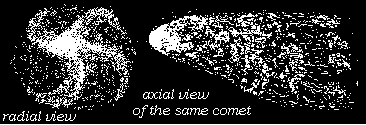
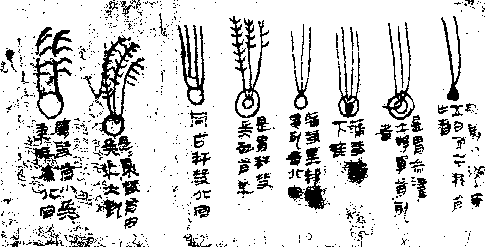
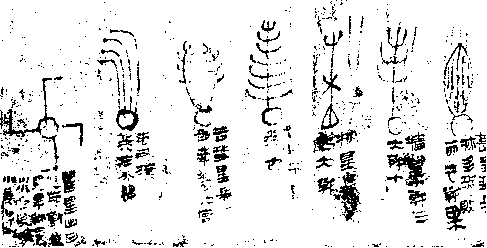
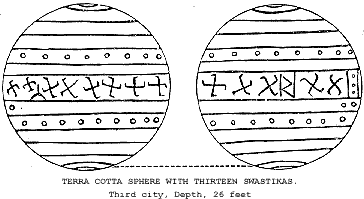
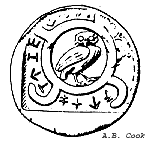
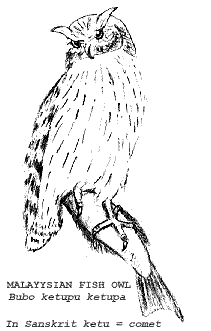
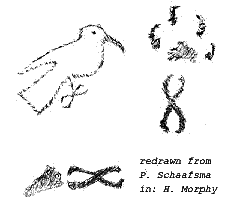
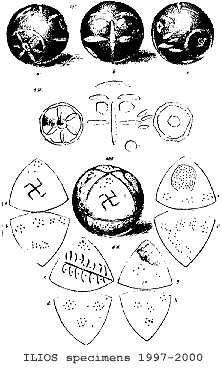


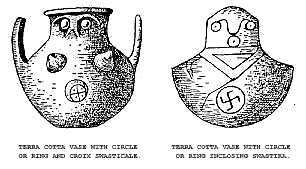



Fascinating FLASHBACK, thanks for reposting. Any updates that you know of that you could append this with?